New Books and Media
Surviving Death: A Journalist Investigates Evidence for an Afterlife, by Leslie Kean
Publish Date: March, 2018
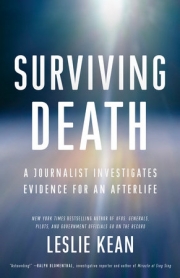
Being and Biology: Is Consciousness the Life Force?, edited by Brenda Dunne and Robert Jahn
Publish Date: February, 2018
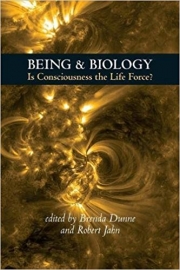
From the publisher's website:
Is consciousness actually the Life Force, the animating principle which underlies and unifies mind, body, and spirit in all living things, and which philosopher Henri Bergson termed the élan vital? This book offers a compendium of empirical evidence and theoretical perspectives from a broad range of scholarly disciplines, which suggest that there is an unbroken, non-local, collective aspect of consciousness that links distant individuals and events—a kind of resonant connectedness that defies separation in space and time.
Paranormal Encounters on Britain's Roads: Phantom Figures, UFOs and Missing Time, by Peter A McCue
Publish Date: February, 2018
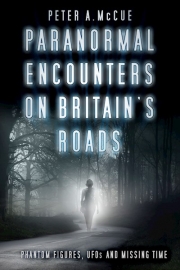
From the publisher's website: In this detailed book, Dr Peter McCue reflects on the enormous range of paranormal phenomena to have been reported along Britain’s roads, and examines the theory that certain areas seem to be hotspots for such occurrences, such as the A75 and B721 roads in southern Scotland, and the Blue Bell Hill area in Kent. He delves into the sightings of apparitional vehicles; encounters with ‘colliding apparitions’; ‘phantom hitch-hikers’; out-of-place big cats; phantom black dogs; UFOs; ‘missing time’ (strange memory gaps); vehicle interferences (such as mysterious breakdowns); and incidents in which drivers and passengers seem to have been translocated in space or time. This thorough book debates the evidence and theories in a critical but open-minded way, and is a welcome addition to the genre.
Reality Denied. Firsthand Experiences with Things that Can’t Happen – But Did, by John B. Alexander
Publish Date: February, 2018
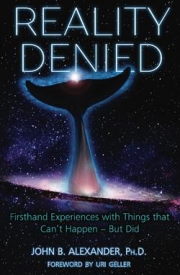
About the Author:
JOHN B. ALEXANDER, Ph.D., is a retired senior Army officer with decades of experience with a wide range of phenomena. Traveling to all eight continents, he has encountered events that defy common explanation. He has met with shamans in the Amazon, the Himalayas, the Andes, East and West Africa, and Northern Mongolia. In Tonga, he dived in open ocean with humpback whales, and was involved with telepathic experiments with wild dolphins in the Bahamas. A psychic adventurer, he practiced psychokinetic metal bending, fire walking, and caused a white crow to fly for the National Academy of Sciences. A founding board member of IRVA, he is a past-president of IANDS, and former SSE councilor. Straddling two worlds, he is also retired from Los Alamos National Laboratory, and served on studies with the National Research Council, the Army Science Board, the Council on Foreign Relations, NATO, and was a senior fellow of a DoD university. Dr. Elisabeth Kübler-Ross headed his doctoral committee.
The Bothell Hell House: Poltergeist of Washington State (2nd Ed.), by Keith Linder
Publish Date: February, 2018
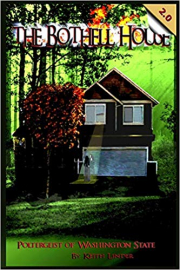
From the back cover: 2nd Edition July 2018 - In 2012, my girlfriend and I took up residence in a suburban home right outside Seattle, Washington. What we saw and experienced within weeks of moving in, end up sending shock waves through the paranormal community. BREATH IN / BREATH OUT, because this tale is like no other. The Bothell Hell House has finally arrived. This book explains what happened to me and my girlfriend while living there from 2012 to 2016. But that's not all. I’m not only going to share our horrible experience. I’m going to provide some evidence. Video reenactments of what scared me the most. Aftermath pictures of what attacked us combined with the audio and video evidence are what set this book apart from other haunted tales. What I and my girlfriend lived through and equally important what others before us lived through has come full circle. Yes, this house was featured on Travel Channels Ghost Adventures episode titled “Demons in Seattle.” The episode where Zak Bagans and crew left empty-handed. Why did they leave empty-handed? How does one investigate a malevolent haunting? Those questions and more are finally getting answered. Prepare yourself for an interactive journey. Recently updated.
Guidance Notes for Investigators of Spontaneous Cases: Apparitions, Hauntings, Poltergeists and Similar Phenomena, by Steven T. Parsons
Publish Date: January, 2018
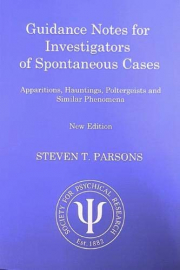
These guidance notes are intended to be helpful for those who seek to investigate Ghosts, Apparitions, Hauntings, Poltergeists and related phenomena. These are generally referred to as being spontaneous phenomena as they normally occur without warning, as such they cannot be predicted or prompted. Since the earliest times, countless witnesses have attested to experiencing apparitions or other ghostly phenomena and thousands of buildings and places have gained a reputation for being haunted. To ignore or dismiss these accounts would be foolish, to acknowledge them as proof without question or study would be equally so.
Available through the SPR Book Store.
Investigating Ghosts: The Scientific Search for Spirits, by Benjamin Radford
Publish Date: January, 2018
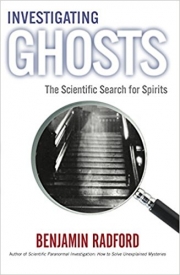
Ghosts have fascinated and haunted us for millennia. They appear in our campfire tales, films, books, and television shows as well as in our dreams and nightmares. Despite widespread belief in spirits and the popularity of television ghost hunting shows, scientific evidence for them remains elusive. Investigating Ghosts is the first book to examine the history and techniques of ghost hunting from folkloric, scientific, and sociocultural perspectives.
No mere armchair scholar, author Benjamin Radford's book is based on nearly twenty years of first-hand, science-based investigations and research. Investigating Ghosts will entertain and educate skeptics and true believers alike, separating fact from fiction about this timeless mystery.
Topics include: 1) Guidelines for scientifically investigating ghost reports; 2) Analyzing photographic, audio, and video evidence; 3) Ghost hunting equipment: What works, what doesn't, and why; 4) In-depth case studies of solved ghost investigations; 5) Understanding the psychology of ghost experiences.
Time and The Rose Garden: Encountering the Magical In the Life and Works of J.B. Priestley, by Anthony Peake
Publish Date: January, 2018
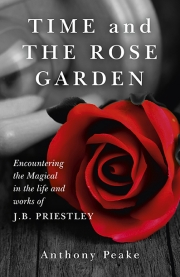
J.B. Priestley is considered by many to be an old-fashioned playwright whose work is locked in a pre-war world of provincialism and whose ideas are way past their sell-by date. In Time and the Rose Garden, internationally recognised author Anthony Peake re-assesses the plays and novels of this fascinating writer. In doing so, Peake argues that Priestley should be recognised as one of the most prescient of all middle century playwrights and that his ideas on time, consciousness and mortality can be found in hugely popular blockbusters such as The Matrix, Vanilla Sky, Deja Vu, Sliding Doors, Butterfly Effect and many others.
Arthur Balfour's Ghosts: An Edwardian Elite and the Riddle of the Cross-Correspondence Automatic Writings, by Trevor Hamilton
Publish Date: December, 2017
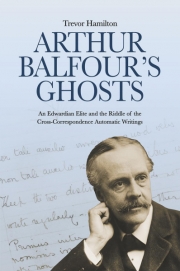
From the publisher's website: "This book tells the incredible story of the cross-correspondence automatic writings, described by one leading scholar of the field, Alan Gauld, 'as undoubtedly the most extensive, the most complex and the most puzzling of all ostensible attempts by deceased persons to manifest purpose, and in so doing to fulfil their overriding purpose of proving their survival'. It is an intensely personal and passionate story on so many levels: May Lyttelton trying to convince her lover Arthur Balfour of her continued existence; Frederic Myers with indomitable persistence trying to produce evidence to prove survival generally; Edmund Gurney and Francis Balfour striving from beyond the grave to influence the birth of children who would work for world peace; Gerald Balfour and his lover Winifred Coombe-Tennant believing that their child, Henry, would be the Messianic leader of this group of children."
Further information about the book can be found on Imprint Academic's website:
http://books.imprint.co.uk/book/?gcoi=71157100349240
Trevor Hamilton has produced an entry on the cross-correspondences in the SPR's online Psi Encyclopedia:
https://psi-encyclopedia.spr.ac.uk/articles/cross-correspondences
Angelos Tanagras – My Memoirs: A Collection of Short Stories, by Fotini Pallikari
Publish Date: November, 2017
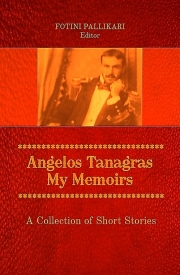
From Dr. Pallikari’s website: The present volume contains 23 articles based on the memoirs of Dr. Angelos Tanagras, edited, annotated and translated from the original Greek into English by Fotini Pallikari. They describe the life, work and personality of Tanagras: his childhood, when he was serving as adoctor in the Greek Royal Navy, and later when he established and ran the Greek Society of Psychical Research.
These selected stories aim to offer a valuable source of information on the cultural heritage not only of Greece, but also of those countries Tanagras visited or just interacted with during the time from the late 19th and up to the middle 20th century. The material presented here should be of interest to historians, psychologists, parapsychologists and humanities scholars.
Further information can be found on Dr. Pallikari's website:
http://users.uoa.gr/~fpallik/tanagras.htm
and on her Linkedin page:
Science of the Seance: Transnational Networks and Gendered Bodies in the Study of Psychic Phenomena, 1918-40, by Beth A Robertson
Publish Date: November, 2017
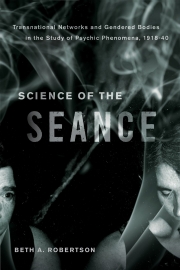
From the publisher's website: In the 1920s and ’30s, people gathered in darkened rooms to explore the paranormal through seances. Science of the Seance resurrects the story of a select transnational group and their quest for objective knowledge of the supernatural world, casting new light on empiricism and its relationship to gender, sexuality, and the body in this era.
Drawing on publications, correspondence, seance notes, and photographs from Canada, the UK, and the US, Beth A. Robertson draws back the curtain to reveal a world inhabited by researchers, spirits, and spiritual mediums, including the notorious Mina “Margery” Crandon. Representing themselves as masters of the senses, untainted by the effeminized subjectivity of the body, psychical researchers believed that machines and empirical methods could transform the seance from an isolated spiritual encounter into a transnational empirical project. The laboratory of the spirits that they created, however, opened up a space where mediums and ghostly subjects could and did challenge their claims to exclusive scientific expertise and authority.
This innovative reassessment of paranormal investigation and the transatlantic ties of the seance reveals how science, metaphysics, and the senses collided to inform gendered norms in the interwar era.
This book will be of interest to historians of science, medicine, and religion and technology, as well as feminist scholars and cultural theorists.
The Ghost Studies New Perspectives on the Origins of Paranormal Experiences, by Brandon Massullo
Publish Date: October, 2017
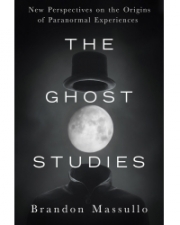
From the publisher's website:
You’ve just laid down for the night when suddenly doors slam and the curtains shift. The lights begin to flicker and a white mist forms in front of you. You shut your eyes and keep muttering, “ghosts aren’t real.” But then you open your eyes and realize that “harmless” mist has shifted into the form of a man, staring intensely at you, as he floats above your bed.
What causes ghostly experiences?
Are ghosts real?
Why do certain people report numerous ghostly encounters and others none?
For centuries these questions have intrigued, puzzled, and bedeviled science, skeptics, and even believers. Based on cutting-edge research and new theories, The Ghost Studies provides insight into some of life’s greatest mysteries.
This fascinating book is far more than a compilation of ghost stories. The Ghost Studies provides scientific explanations for paranormal occurrences, including: New and exciting scientific theories that explain apparitions, hauntings, and communications from the dead. The latest research on the role of energy and electricity in hauntings. The role that emotions, bioenergetics, and the environment play in supernatural phenomena. New research into why some individuals are more prone to ghostly encounters.
Brandon Massullo is a clinical therapist and parapsychologist residing in Medina, Ohio. Fascinated by paranormal phenomena for more than 20 years, Massullo has been a participant in and featured speaker at numerous paranormal forums and events. He studied psychology and parapsychology at the University of Edinburgh in Scotland. His research has been cited in numerous parapsychological journals, articles, and mainstream books.
Listen to a sample on Brilliance Audio

